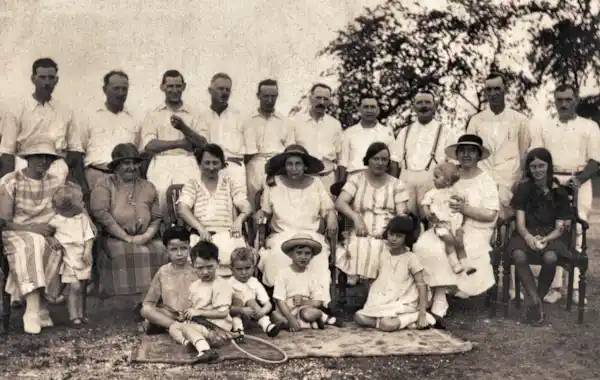06 December 2021
|
What information does the 1921 Census contain? How and where do I access the census? Your questions answered in the Family Tree 1921 Census guide
The 1921 Census for England and Wales was released online on 6 January 2022 and is available at FindMyPast.
Read on to find out what information the census contains, where to access it online and offline, and where free of charge is available.
When is the 1921 Census available?
FindMyPast has been chosen as the commercial partner for The National Archives to make the 1921 census available online. They have captured digital images and transcribe the records to allow researchers to explore the information.
The online release for the 1921 Census for England and Wales was 6 January 2022, via FindMyPast. The census was taken on 19 June 1921 and records information on almost 38 million individuals.
Where can I see the 1921 England and Wales Census?
On-site access to the census will initially be available at the National Archives in Kew, as well as at regional hubs in Manchester and as National Library of Wales in Aberystwyth.
Will Ancestry get the 1921 Census?
For the foreseeable future, online access is available only via FindMyPast. However, in line with previous census releases, Ancestry may in due course also offer the census to its members.
Can I view the 1921 Census for free?
You can access the census for free via the hubs detailed above.
How much does it cost to access the 1921 Census for England and Wales?
You need to register for an account Findmypast, and will also need to pay additional pay-per-view fees of £2.50 to view a transcript, £3.50 to view an original image. If you have a Pro subscription to Findmypast, then you will receive a 10% discount on the pay-per-view fees.
Which countries does the 1921 Census include?
The collection released on 6 January 2022 covers England and Wales. The 1921 Census for Scotland will become available to search later in 2022. The 1921 for Ireland was never taken due to the events surrounding the Irish War of Independence.
How many people were enumerated for England and Wales?
37,885,242 persons; 18,082,220 males and 19,803,022 females (Histpop. Part II, statistical notes, p. vii)
How many people were enumerated for Scotland?
4,882,288; 2,348,403 males and 2,533,885 females
Discover more Scottish census stats at Vision of Britain.
When will the 1921 Census for Scotland become available?
The National Records of Scotland currently states that it will become available in the latter half of 2022 on the ScotlandsPeople website and the ScotlandsPeople Centre.
What information does the 1921 Census for England and Wales contain?
This census is the most informative yet for family historians.
New information not available on previous censuses includes:
- Place of employment
- Industry in which employed
- Materials worked with
- Name of employer
- Marital status for those 15 or older (with ‘divorce’ as a status for the first time on the census)
- Details of whether or not parents still alive for those under 15
- Whether the person spoken an additional language (for returns in Isle of Man and Wales)
Where can I learn more about the census?
At The National Archives census portal and at the Family Tree census hub.
For a useful timeline about the census in Scotland see Scotland's Census
Are there differences to the questions that were asked on the 1921 Census forms (in comparison with the 1911 Census)?
Yes quite a few!
- Ages were given in years and months.
- Those aged 15 or over were asked whether they were single, married or divorced (divorce had not been specified as an option in previous census decades).
- Details of employer and place of work were enquired about, as the answers were hoped to shed light on how far people were travelling to work, and what their transport requirements would be.
- The ‘famous’ fertility question of the 1911 Census was removed. Rather than asking for the duration of marriage and the age of the children, simply the number and ages of living children under 16 were required.
- Those aged 15 or under were asked to specify if one or both of their parents had died, and if just one, which one.
- The disability question was also absent from the 1921 Census, as it was deemed an unreliable means of obtaining accurate information.
Why isn’t there a 1931 Census for England and Wales?
On the night of Saturday 19 December 1942 the Office of Works, Hayes, Middlesex caught fire – seemingly from an accidentally discarded cigarette (not enemy action, which might be supposed from the 1942 date), which smouldered with disastrous consequences, despite there being 6 firewatchers on duty at the location that night. The Office of Works was the location at which all of the 1931 Census records for England and Wales were stored. The fire raged to such an extent that there were no records deemed worth salvaging at the time as a consequence.
How did the Scottish 1931 Census records survive?
They were stored in Edinburgh, so avoided the conflagration that destroyed the English and Welsh census.








